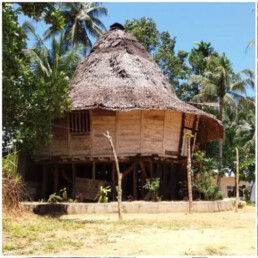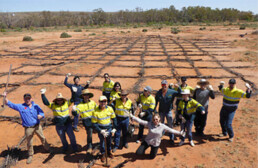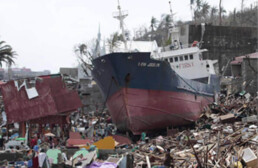Back of Bourke

As a metaphor for a place far from anywhere, “back of Bourke” was coined for a reason. It took an hours flight and a four hour drive just to get to Bourke. Then another two hours on mostly dirt roads to get to the “back” of it. Which was Bush Heritage’s Naree Reserve.
Such a trip rewards those with determination to get there with a rich experience. And so it proved for Jord’s annual Bush Heritage weekend of R&R, team bonding and a chance to “do some good”.
This part of the country is hard to get your head around, even for us Aussies. It’s tough and unforgiving. The ruins of local town Yantabulla, whose last resident left in 2000, shows that a modern lifestyle is not possible. But the archaeological evidence shows this land supported humanity for thousands of years. And the birdlife is astonishing. We saw loads of parrots, raptors, martins and swallows. There were pigeons and songbirds too, which we struggled to identify without Bush Heritage staff to help.
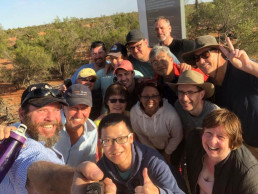
We only saw a few roos, due to the drought. But plenty of feral goats and pigs. And this is where Jord comes in. We don’t have much botany or zoology knowledge at Jord, but we can construct and demolish things OK. So, armed with pliers & posts, drivers & wire strainers, we set about helping Reserve Manager Greg Carroll repair a feral goat trap. We now defy any goat to escape our fully refurbished, maximum security, goat pen.
Once done, we cooled off alongside & in a waterhole that made the Yangtze look like a crystal clear mountain brook. Then, after a good country square meal, we adjourned to the campfire to tell tall stories over a few beverages. And to play a strange card game our Dutch colleagues brought with them. It appeared to have no rules…
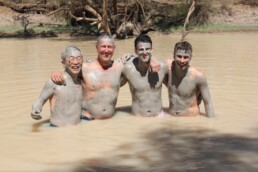
Searching for Planigals
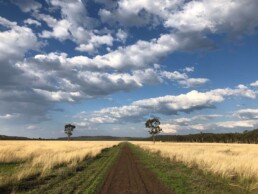
This fourth instalment of Jord’s annual Bush Heritage weekend involved 19 of us flying to its 60,000 hectare Carnarvon Reserve in central Queensland. Nestled in behind the renowned Carvarvon National Park, a four hour drive southwest of Emerald, the property was purchased by Bush Heritage back in 2001. At that time it was in a seriously dilapidated state. The absence of livestock over the past 18 years has allowed the native blue grass to rebound in abundance.
Jord’s task over the weekend was hard yakka. We muscled our way through sheets of granite, using just crowbars and sweat, to instal traps that allow scientists to monitor the presence of mammals and reptiles. In particular, we were seeking Planigals, the smallest but by most accounts the fiercest of Australia’s marsupials.
Hydraulic backhoe’s are usually engaged to do this work. However, Jord’s reputation for hard work on past weekends was our undoing. The Reserve Manager selected a particularly remote location, where vehicle access was impossible. One of the toughest holes was dug by Chris, Sarah, Adi, Simon, Luke and Hammad. You can see the smashed granite, extracted so unwillingly by mother earth, piled up trophy-like before them.
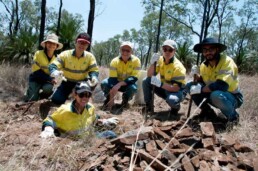
Staff Working Bee, Scottsdale Reserve, NSW
The third Jord Foundation (JET) roadshow was closer to home, just a 4 hour drive southwest of Sydney, to Scottsdale, a 1,300 hectare Bush Heritage property nestled on the banks of the Murrumbidgee River.
Our assignment this weekend was to plant a couple of hundred snow gum and acacia trees, to rehabilitate land that had been emaciated by the dreaded Lovegrass. Never has a weed been more inappropriately named. Introduced from Africa to stabilise eroding watercourse banks from land that had been overgrazed, it soon took over the entire property, at the exclusion of all else. Worse still, no animal, neither wild nor domestic, will eat it. A second task was to remove a few hundred metres of firmly entrenched rabbit proof fencing,. Much blood, sweat and tears went into this task, sated only by the prodigious consumption of food and beverages that evening.
Short but spectacular storms throughout this work did not damp our spirits, slow our work, nor quench the evenings bonfire. But those storms did excite the photography enthusiasts amongst us. Thanks to our host Phil Palmer and his delightful family, our Tour Guide Matt Taylor for his wit and patience in sheparding us around, and to our JET spiritual leader Simon Cobden for his effort in coordinating the various projects we have on with Bush Heritage at the moment
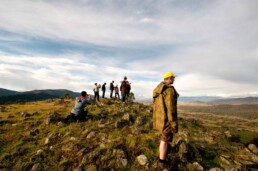
Clean Water Nias, Indonesia

There is no vehicle access to this village. Visitors must hike for 2 hours along a dirt track (after an arduous 4 wheel drive trip). Families in this village of 1,000 must walk 2km just to collect water.
The project is a collaborative effort. The villagers provide labour and local materials such as sand and gravel. Surfaid and Jord will provide tanks, cement, piping and the technical expertise required to enable the works to be completed.
In time, Jord staff will have a chance to visit Nias, to provide first hand support to Surfaid. For those so inclined, there’s also an opportunity to find some remote, isolated surf breaks.
Visit www.surfaid.org to learn more about this fine organisation that Jord is delighted to support.
“Even today, some residents still live in tents provided by the United Nations High Commissioner for Refugees. Indeed, although money continues to dribble in, damaged government offices and school buildings remain unrepaired; and many of those who lost their means of livelihood are still struggling to find steady work.
There is so much still needing to be done that sometimes it can be overwhelming. On the other hand, it offers a great opportunity to make a difference in people’s lives.
So what can be done? Health and sanitation projects, especially the provision of clean and safe drinking water through building artesian wells. Solar power to provide homes and streets with lighting. Computers and internet connectivity for schools to give students access to knowledge that a lot of others take for granted. Technological and financial support for projects like hydroponic and aquaculture, to provide families with sustainable and eco-friendly sources of livelihood. This will allow them to provide for their own needs, without relying on hand outs and the goodness of other people’s hearts.”
Jord thanks Jessie, for continuing to care and for helping to keep the flame of hope burning in others.
Habitat restoration in remote South Australia

Boolcoomatta is an ex-sheep station, established way back in 1840. Explorer Douglas Mawson undertook a number of studies there, before his more famous adventures in Antartica in the early 1900s. In its heyday, this massive 600 square kilometre station used to shear 100,000 sheep a year. Whilst it brought great prosperity to the region for many years, farming this fragile environment eventually took its toll, and the property’s commercially viability diminished.
Bush Heritage Australia purchased Boolcoomatta in 2006 and is painstakingly restoring the land to its original condition. Gone are the sheep, the goats, the pigs and many of the feral cats. Native fauna and flora is beginning to regenerate.
Water security is a major concern on this station, located some two hours four wheel drive west of Broken Hill. In 2014, Jord provided funding and engineering services to help overcome this challenge. The project involved the design and supply of various solar-powered pumps, rainwater tanks and piping to provide a combination of rain and bore water storage and supply facilities.
In October 2015, a dozen Jord staff enjoyed a long weekend on the property, engaging in some bush regeneration activities and experiencing first hand just how bountiful yet fragile Australia’s outback is.
Clean Energy Cravens Peak Wilderness Queensland, Australia

Cravens Peak was singled out by the World Wildlife Fund as one of the top nature reserves in Australia. Located some 500 km south of Mt Isa, Bush Heritage Australia purchased this 2,300 km2 property on the northern edge of the Simpson Desert in 2005. Its red sandy dune fields, semi-permanent waterholes, Coolabah woodlands, and gibber plains boasts one of the richest reptile assemblages on earth.
While marginal and unpredictable for agricultural production, the relatively moist and fertile dune swales and temporary waterbodies are an important oasis, providing refuge to many desert animals that retreat in the dry times from the desert proper. A large number of regional and international migrant waterbirds follow seasonal rains to make the most of sudden bursts of productivity.
In 2015, Jord’s JET trust funded the installation of a 10 kW solar powered energy system to provide the necessary power that allows Bush Heritage residents and visiting scientists to conduct station management and research projects in relative comfort.
Clean Water Bon Bon Reserve, South Australia
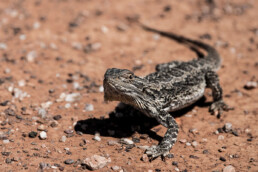
It’s hard to get your head around the scale of Bon Bon Station Reserve, an old sheep station south of Coober Pedy in South Australia. The reserve sits between the Great Victoria Desert and the large saltpan lakes of Eyre, Torrens and Gairdner, which are so big you can see them from space. At around 70 kilometres long and 30 across, it is the size of Sydney.
At its heart is Lake Puckridge, which fills up with water around once a decade and can run to seven metres deep. The lake’s wetlands system attracts large numbers of waders and waterbirds, including black-winged stilts, red-necked avocets and grey teals.
In 2014, JET funded a project to upgrade the water treatment and storage capability of the staff quarters. The project included the cleaning and bacterial decontamination of an old bore system, 1.5km of piping, water storage tanks and installation of telemetry equipment for automated pump operation.
Typhoon Yolanda, Philippines

Catastrophic events are quick to make headlines, get global support for the first few weeks, but are often soon forgotten. We take this opportunity to tell a good story about one Jord staff member’s selfless and relentless effort to keep a flame of hope in others burning.
In November 2013 super typhoon Yolanda – the strongest typhoon recorded in Philipino history – left at least 10,000 killed.
Jord Group Compliance Manager Jessie Salazar spearheaded a campaign for Jord to help give immediate assistance to people left homeless and destitute in the town of Tacloban. Our JET donation was delivered direct to recipients, in collaboration with the Red Cross, via some of our staff volunteering their time to distribute food and other essential items.
Some two years after the event, Jessie continues to devote much of her spare time in supporting ongoing rehabilitation efforts. She travels regularly to Tacloban and provides the following report from her latest visit.
“Even today, some residents still live in tents provided by the United Nations High Commissioner for Refugees. Indeed, although money continues to dribble in, damaged government offices and school buildings remain unrepaired; and many of those who lost their means of livelihood are still struggling to find steady work.
There is so much still needing to be done that sometimes it can be overwhelming. On the other hand, it offers a great opportunity to make a difference in people’s lives.
So what can be done? Health and sanitation projects, especially the provision of clean and safe drinking water through building artesian wells. Solar power to provide homes and streets with lighting. Computers and internet connectivity for schools to give students access to knowledge that a lot of others take for granted. Technological and financial support for projects like hydroponic and aquaculture, to provide families with sustainable and eco-friendly sources of livelihood. This will allow them to provide for their own needs, without relying on hand outs and the goodness of other people’s hearts.”
Jord thanks Jessie, for continuing to care and for helping to keep the flame of hope burning in others.

